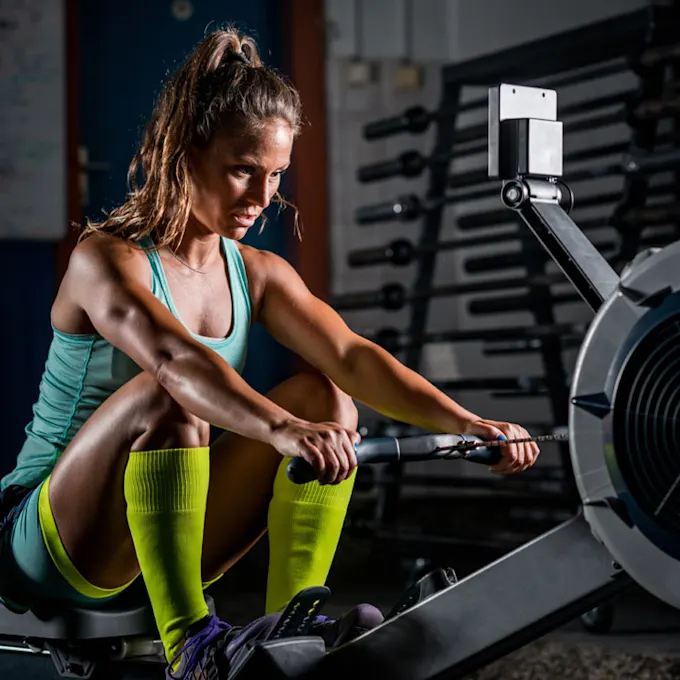
Rowing machines are popular pieces of exercise equipment that provide a full-body workout. They come with different resistance mechanisms that provide varying levels of intensity and challenge. In this article, we will explore how to choose the right resistance mechanism for your rowing machine.
Types of Resistance Mechanisms
Rowing machines come with different types of resistance mechanisms, each with its unique features and benefits. The four primary resistance mechanisms are:
Air Resistance
Air resistance rowing machines are the most common type of rowing machine. They use a flywheel with blades that spin as the user pulls the handle. The resistance is created by the wind generated by the spinning blades. The faster the user rows, the more resistance they will encounter. Air resistance rowing machines provide a smooth and natural rowing motion, similar to rowing on water. They are also adjustable, allowing users to increase or decrease the resistance to their desired level. This makes them a versatile option for users of all fitness levels.
Magnetic Resistance
Magnetic resistance rowing machines use a magnetic brake system to create resistance. The user pulls the handle attached to a chain or belt that goes around a flywheel with magnets inside it. As the magnets move closer to the flywheel, they create resistance. Magnetic resistance rowing machines provide a quiet and smooth rowing motion. They are also adjustable, allowing users to customize the resistance to their desired level. However, they may not provide the same level of resistance as air resistance rowing machines, making them better suited for users who prefer a lower intensity workout.
Water Resistance
Water resistance rowing machines use a tank of water and paddles attached to the flywheel to create resistance. As the user pulls the handle, the paddles move through the water, creating resistance proportional to the speed and force of the user’s movements. Water resistance rowing machines provide a realistic and natural rowing motion, similar to rowing on water. The sound of the water sloshing in the tank also adds to the user’s experience. They are also adjustable, allowing users to increase or decrease the resistance to their desired level. However, they may be more expensive and require more maintenance than other types of rowing machines.
Hydraulic Resistance
Hydraulic resistance rowing machines use pistons or cylinders filled with fluid to create resistance. The user pulls the handle attached to a cable or strap that goes through the pistons, creating resistance. Hydraulic resistance rowing machines provide a compact and affordable option for users who want a full-body workout. They are also adjustable, allowing users to customize the resistance to their desired level. However, they may not provide the same level of resistance as other types of rowing machines, making them better suited for users who prefer a lower intensity workout.
Factors to Consider
When choosing the right resistance mechanism for your rowing machine, there are several factors to consider.
Fitness Level
Your fitness level is an essential factor in choosing the right resistance mechanism for your rowing machine. If you are a beginner or have a lower fitness level, you may want to choose a rowing machine with a lower resistance level, such as a hydraulic or magnetic resistance machine. If you are more experienced or looking for a higher intensity workout, you may want to choose a rowing machine with a higher resistance level, such as an air or water resistance machine.
Budget
Your budget is another important factor in choosing the right resistance mechanism for your rowing machine. Air resistance rowing machines tend to be more expensive than hydraulic or magnetic resistance machines. Water resistance rowing machines may also be more expensive and require more maintenance. If budget is a concern, a hydraulic or magnetic resistance machine may be a more affordable option.
Space
Consider the space where you plan to use the rowing machine. Some resistance mechanisms, such as water resistance, may require more space than others. Make sure the rowing machine you choose fits comfortably in the space and allows for enough room to move around it.
Noise
Consider the level of noise the rowing machine makes. Air resistance rowing machines tend to be louder than magnetic or hydraulic resistance machines. Water resistance machines may also be louder due to the sound of the water sloshing in the tank. If noise is a concern, consider a magnetic or hydraulic resistance machine.
Maintenance
Consider the maintenance requirements of the rowing machine. Water resistance machines require the most maintenance, as the water needs to be changed periodically and the tank needs to be cleaned. Air resistance machines require minimal maintenance, while hydraulic and magnetic resistance machines fall somewhere in between.

